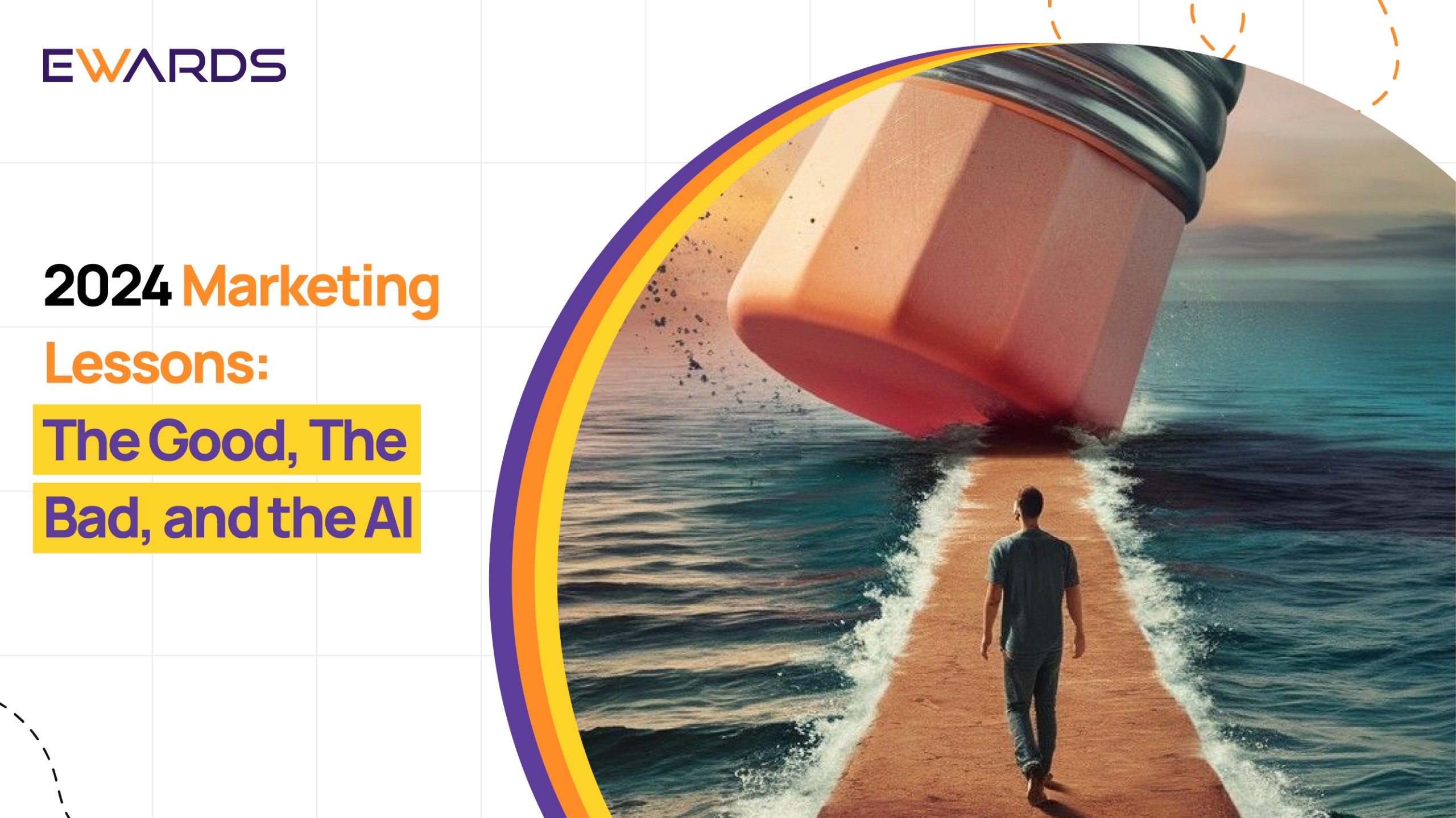
If 2024 taught us anything in the martech space, it’s this: marketing never sleeps, AI is terrifyingly smart (and sometimes hilariously wrong), and your customers are harder to impress than ever. Marketers were pushed to their limits, adapting to new technologies, navigating a shifting privacy landscape, and scrambling to keep up with ever-more-demanding customers. We learned a lot along the way—sometimes the hard way.
AI made leaps that left us both in awe and a little unnerved (“Did my chatbot just outwit me?”), but let’s be real, personalization hit levels of precision that made old-school methods look like caveman drawings, and loyalty programs emerged as the ultimate VIP pass to a brand’s heart—or wallet.
But here’s the kicker: while the tech got cooler, the lessons were undeniably human. So, let’s break down the five biggest marketing takeaways from 2024—what worked, what didn’t, and what we’re taking into 2025.
1. AI: Your Best Frenemy in Marketing
2024 in stats: 70% of marketers adopted AI tools for campaign management, and 48% reported feeling “overwhelmed” by their newfound robot overlords.
Source: Gartner Marketing Technology Survey 2024
AI transformed marketing in ways we didn’t think possible—from generating eerily good ad copies to predicting customer behavior with uncanny accuracy. But, as with all good things, there were oops moments. For example, when an AI-powered email campaign addressed every recipient as “Customer No. 2357,” Personal touch? Not so much.
Lesson: Use AI to scale, but keep your humanity intact. No bot can replace a marketer’s gut instinct—or their ability to apologize for a tech fail with a cheeky meme.
2. Loyalty Programs: The Comeback Kings
2024 in stats: Brands with well-designed loyalty programs saw customer retention increase by 20%, and 53% of customers said they’d spend more to earn exclusive rewards.
Source: Harvard Business Review, Customer Loyalty 2024
Loyalty programs are no longer just punch cards or “earn 10 points for every dollar.” They’re full-blown ecosystems with tiers, perks, and sometimes, gamified adventures. Customers want to feel special, and brands that nailed this kept their audience coming back for more.
Lesson: Loyalty isn’t bought—it’s earned. Make your program worth their time (and points). Also, avoid making the rewards as confusing as assembling IKEA furniture.
3. Data Privacy: The Fine Line Between Useful and Creepy
2024 in stats: 78% of consumers reported concerns about data usage, yet 54% admitted they’d trade data for discounts.
Source: PwC Consumer Privacy Survey 2024
With privacy laws tightening and customers growing more data-savvy, marketers had to walk a fine line. Transparency became a competitive advantage. The trick? Be upfront about what you’re collecting and why—nobody likes surprises in their inbox, especially if it’s from a brand they didn’t know had their numbers.
Lesson: Respect their data, respect their trust. And for goodness’ sake, stop spamming.
4. De-Influencing: The Anti-Hype Movement
2024 in stats: 34% of Gen Z said they trusted de-influencers over traditional influencers when making purchase decisions.
Source: Business Insider, “Why Gen Z Trusts De-Influencers Over Traditional Influencers” (2024)
Turns out, less is more. In a world of overhyped products and perfectly curated Instagram feeds, customers leaned into authenticity. De-influencers—those who call out what not to buy—shaped consumer behavior in surprising ways.
Lesson: Ditch the fluff. Be real, be relatable, and sometimes, admit when your product isn’t the best fit. Customers appreciate honesty more than a glossy filter.
5. Personalization: No, It’s Not Stalking—It’s Marketing
2024 in stats: Personalized emails generated 41% higher click-through rates, and websites with dynamic content saw a 25% boost in conversions.
Source: McKinsey & Company 2024 Report on Personalization
Personalization is the name of the game, but true personalization doesn’t mean bombarding everyone with the same “Hi [First Name]!” message and hoping it sticks. It’s about using zero-party data (i.e., the info your customers willingly give you) to offer value, not just relevance. Customers expect you to know them—not just their shopping habits, but their preferences, quirks, and when they’d rather get an SMS over an emails.
Lesson: Personalization is more than just adding someone’s name to an email subject line—it’s about smart segmentation and data ethics. Leverage zero-party data to offer truly personalized experiences that make people feel seen, not stalked. Be relevant, be respectful, and for the love of all things digital, don’t offer “personalized” recommendations for a product they’ve already bought five times.
Conclusion: This year was Wild—But We Lived to Tell the Tale
So there you have it: 2024’s marketing lessons in a nutshell. From AI becoming both our greatest asset and most terrifying assistant to the rise of zero-party data and loyalty programs, we learned that in the world of marketing, evolution is constant—and sometimes, hilariously unpredictable.
As we gear up for 2025, one thing’s for sure: we’ll be smarter, savvier, and hopefully, a little less “oops” with our AI-generated emails. And hey, if nothing else, at least we’ve got some great memes to show for it.